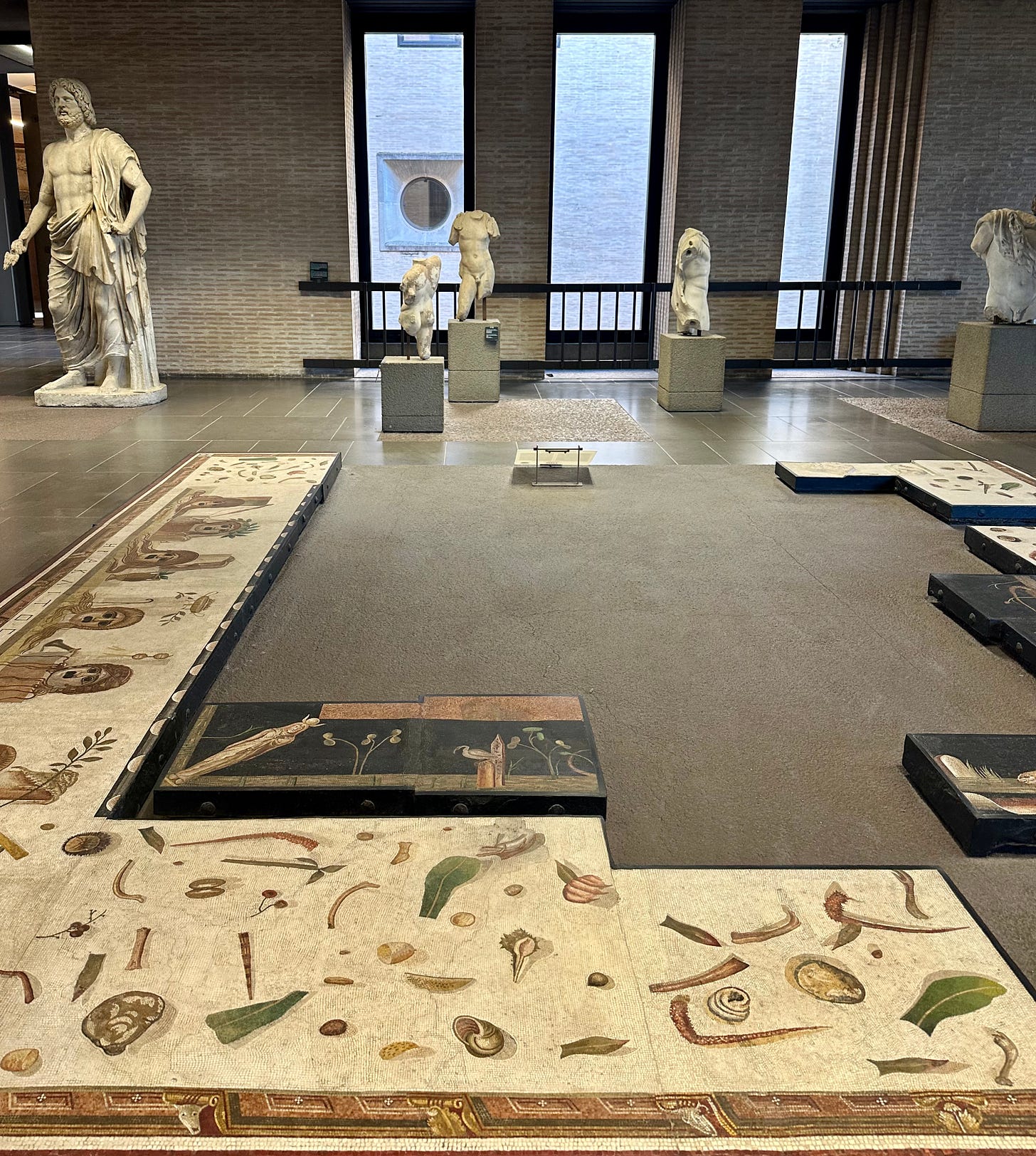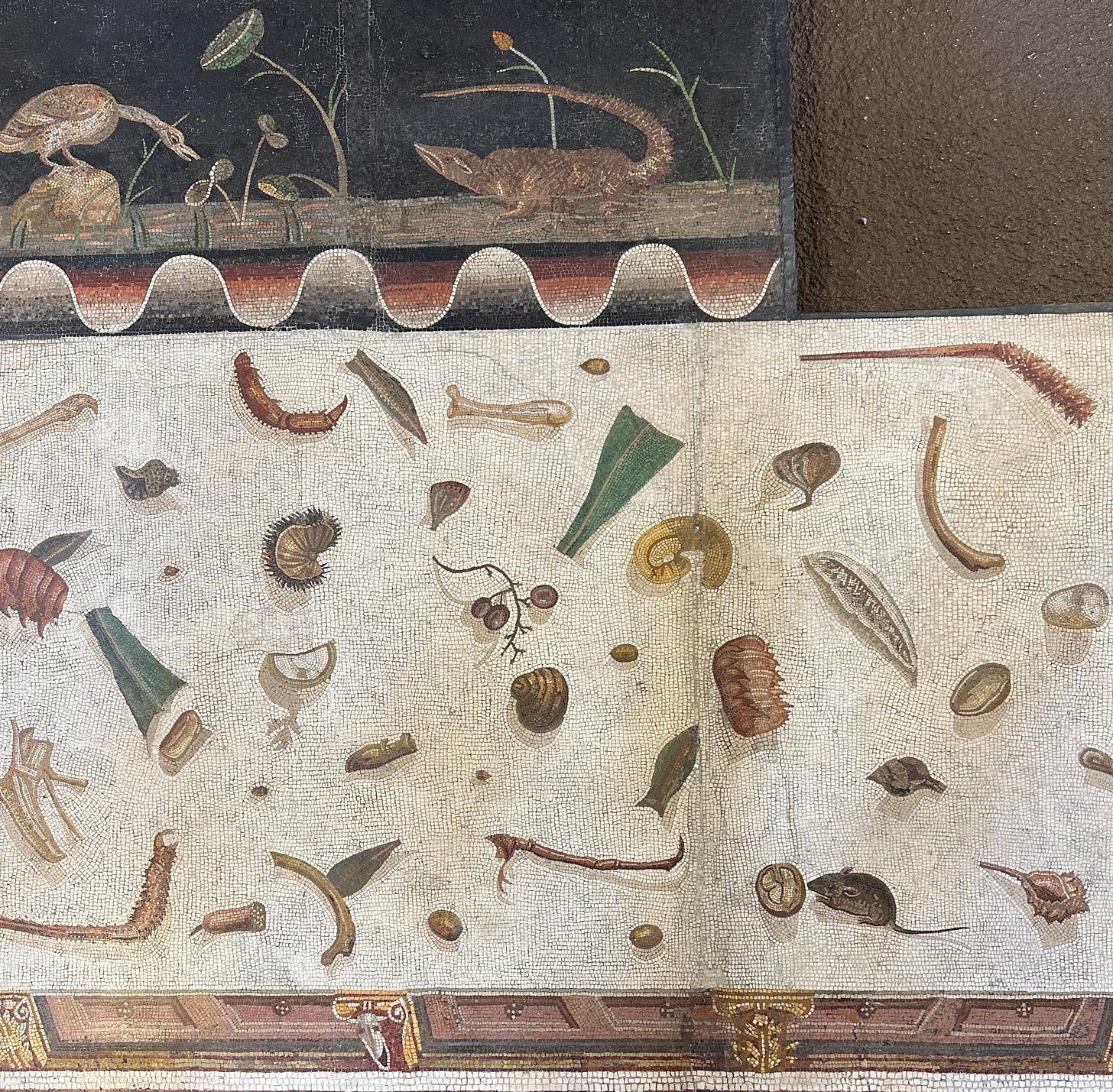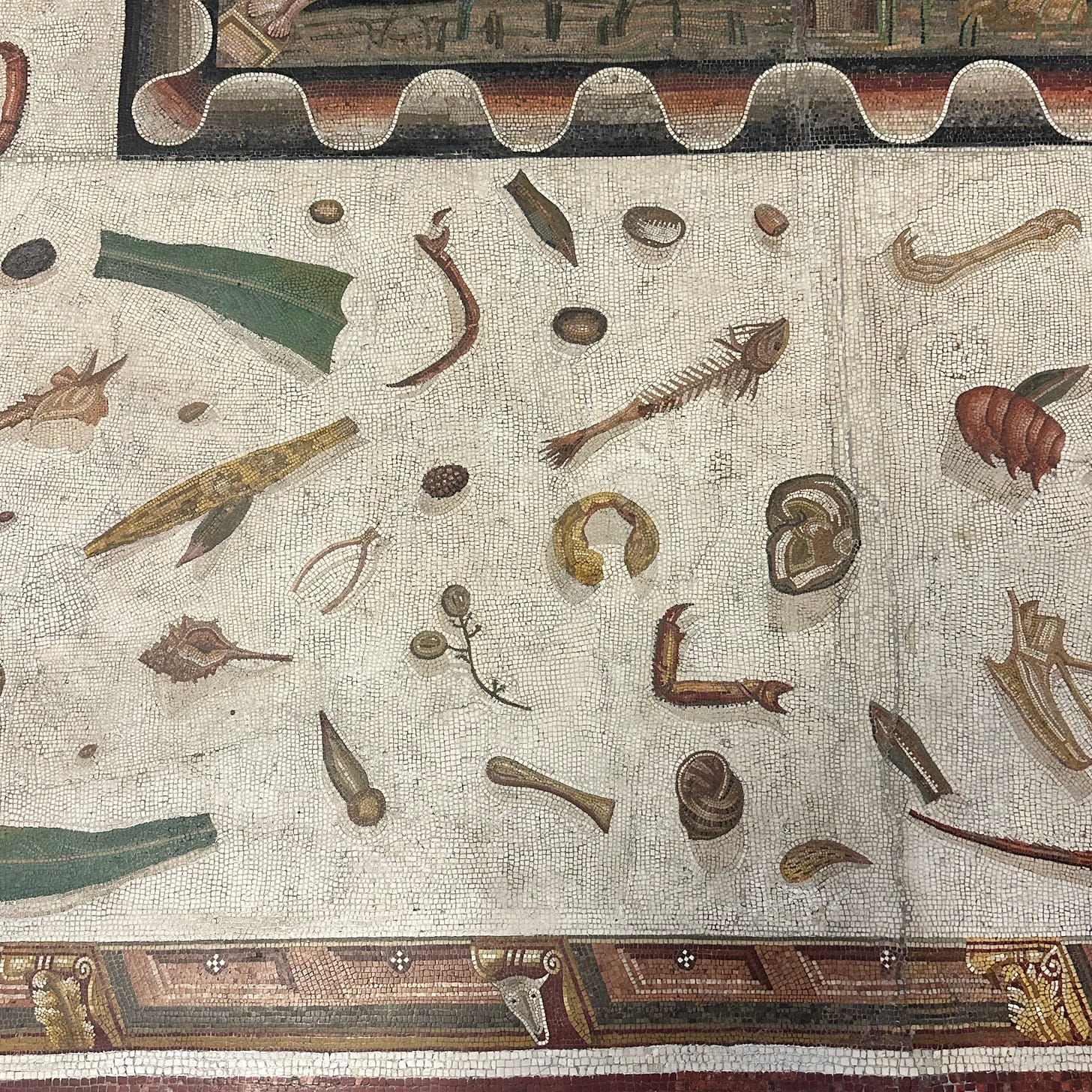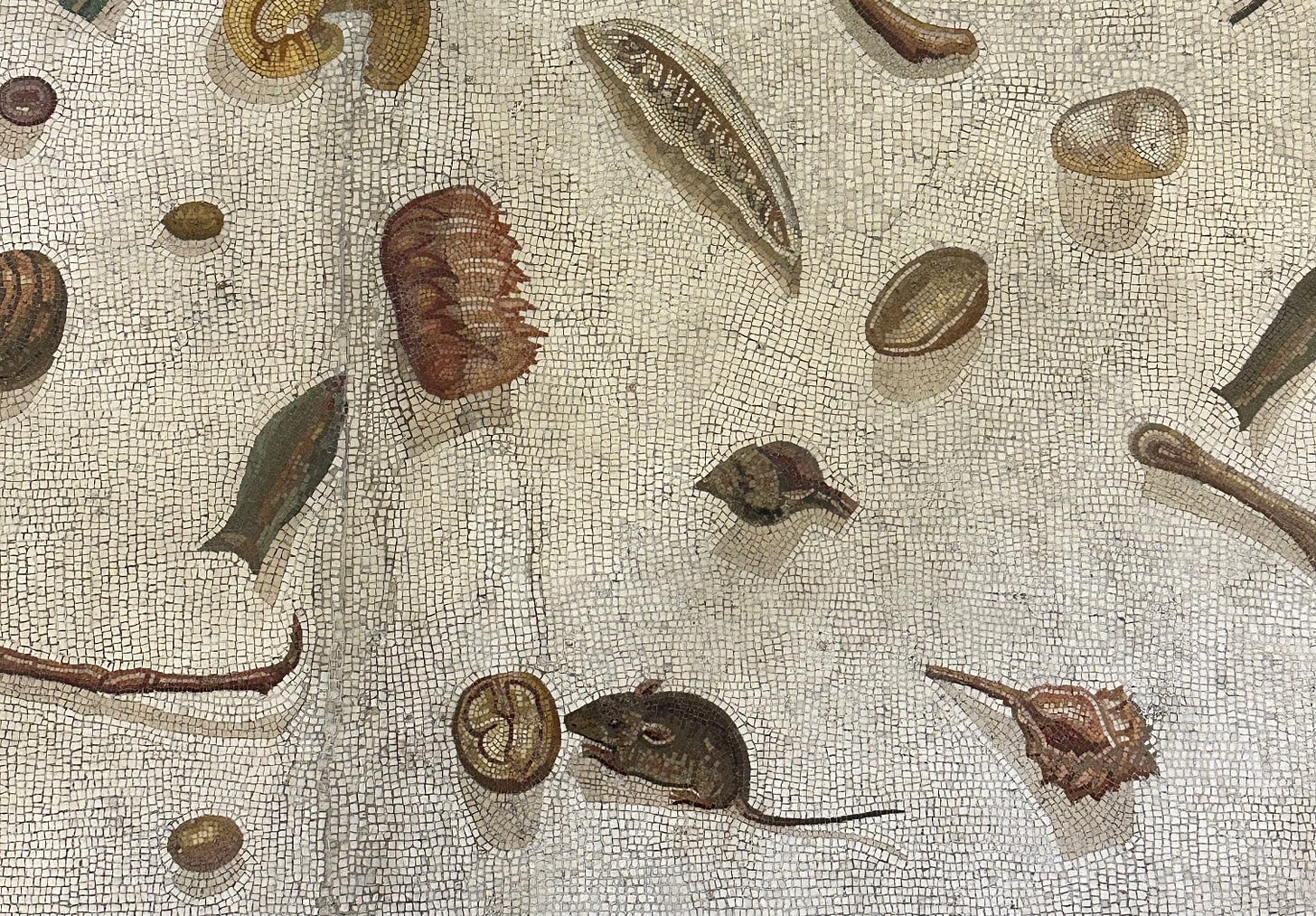The Unswept Floor Mosaic at the Vatican Museums
When taking people to the Vatican Museums I often take a right after the entrance escalator and, before joining the throngs heading towards the Sistine Chapel (surfing the gaps between tour groups is my superpower), pop into the Museo Gregoriano Profano. The Vatican Museums are, after all, alarmingly plural and—to paraphrase the erudite and entertaining Philippe Daverio—one should no more attempt to visit every area in one go than one should expect to read all the books in a library. But a glimpse into the 1960s Brutalist wing which is home to the collection of pre-Christian pieces first brought to the museums in the nineteenth century by Gregory XVI is rewarded with one of the great treasures of the inexhaustible and wildly eclectic Vatican collections.
In the second space of the Gregorian Profane—on the right as one enters—is what survives of a mosaic discovered at a villa on the Aventine Hill and dating to the reign of Hadrian. It is signed by a Greek mosaic artist called Heraclitus and is of a type often referred to as the “unswept floor”.
The central part, largely missing, shows a Nilotic scene (I think we can safely say Heraclitus had never seen a crocodile, shown below bickering with a giant duck), adding another layer of eclectic exoticism to the decorations: theatrical masks, crocodiles, the asàrotos òikos, it is a veritable soup of Eastern Mediterranean erudition. It is also one of the very finest mosaics in Rome, and there’s almost never anyone there.
Writing in book thirty-six of his Natural History, which concerns itself with stone, Pliny the Elder speaks of this mosaic type and mentions an example in Asia Minor by an artist called Sosos:
[The decoration of] pavements [is] an invention of the Greeks, who also practised the art of painting them, until they were superseded by mosaics. In this last branch of art, the highest excellence has been attained by Sosos, who laid at Pergamon the mosaic pavement known as the asàrotos òikos [unswept room]; from the fact that he there represented, in small squares of different colours, the remnants of a banquet lying upon the pavement, and other things which are usually swept away with the broom, having the appearance of being left there by accident.
Pliny, Natural History XXXVI, lx
The tiles of coloured stones imported from across the Empire are tiny, the shadows exquisitely realised. It is an extraordinarily sophisticated visual joke: high art used to emulate that which should be simply thrown away. Here there is a wishbone, there a brace of grapes. There are carapaces of shellfish and a sea urchin. And in the midst of it all a mouse interrupts the still life to nibble at a walnut.







I would go back to the museums for this alone. Superb
That they bothered with depicting the shadows is just delightful. Thank you.